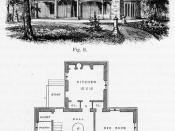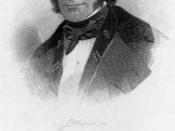The term gothic was first used by Renaissance critics to describe architecture that didn't conform to the styles of the Greeks and Romans. In the 12th century, an abbot of the St. Denis monastery, Suger, used Gothic style in his monastery, where Gothic art first started. Gothic architecture was ubiquitous throughout France and Western Europe throughout the Middle Ages.
During the 19th century, American architects began to lose interest in Greco-Roman Classicism. As a result, they looked at alternatives for inspiration. They turned to medieval and non-classical forms of building. Gothic revival came to the United States from England in the 1830s. Richard Upjohn, a cabinet maker and draftsman, immigrated to the United States in 1829. He was responsible for many works like the Trinity Church in New York City (1846) and St. Paul's Cathedral in Buffalo (1851). He published Rural Architecture in 1852. Upjohn's works and writings were the basis and served as the blueprint of many buildings throughout the country.
Alexander Jackson Davis was the first American architect to revive Gothic style. He published floor plans and three-dimensional views in his 1837 book, Rural Residences. His design for Lyndherst became a showplace for the Gothic revival style. Davis's friend and fellow architect, Andrew Jackson Downing, wrote books on gothic styled cottage villas in 1837. It was mainly because of Downing that rural America became flowered with wooden Gothic architecture.
American gothic revival occurred in the 19th century from 1830 to 1860. It was made popular by architects and artists like Andrew Jackson Downing, Alexander Jackson Davis, and Richard Upjohn. The style was mainly used for cottages, villas, wooden houses, commercial buildings, and churches.


